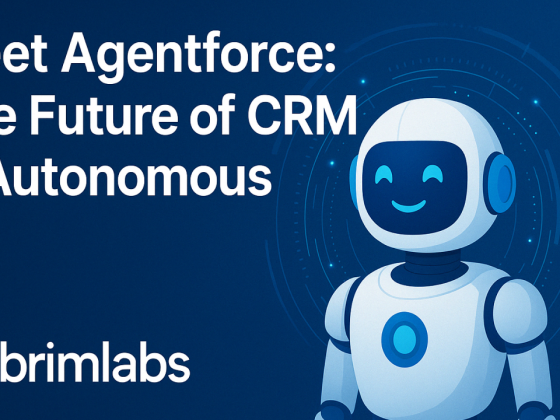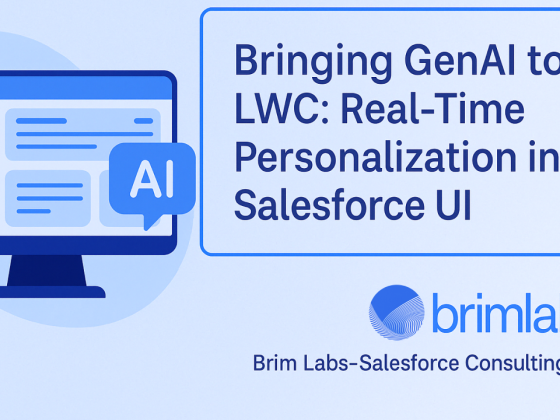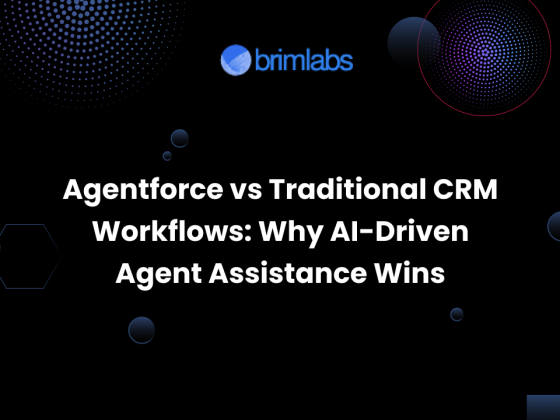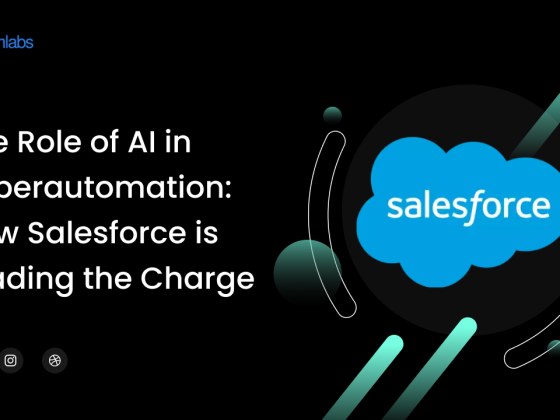Salesforce is a transformative platform in today’s business landscape, driving growth, operational efficiency, and customer-centric strategies. Its versatility makes it suitable for companies of all sizes and industries, providing tools that streamline workflows, automate processes, and enhance customer engagement. However, many businesses face the challenge of optimizing Salesforce to generate substantial Return on Investment (ROI).
This blog explores actionable strategies to maximize ROI through Salesforce. Whether you’re new to the platform or looking to enhance your current setup, the goal is to uncover methods that yield measurable returns. By leveraging automation, refining data processes, and tracking meaningful KPIs, these approaches align Salesforce with key business objectives, boosting profitability. An optimized Salesforce setup isn’t just a system; it’s a business asset that can reduce operational costs, increase revenue through targeted marketing, and improve customer retention.
Understanding ROI in Salesforce
Why Salesforce ROI Matters: Calculating ROI in Salesforce goes beyond justifying costs—it quantifies the platform’s direct influence on your bottom line. When configured strategically, Salesforce can reduce expenses while fostering revenue growth, making it a cost-effective asset that helps organizations achieve more with fewer resources.
Common ROI Drivers:
- Increased Revenue: Salesforce’s robust CRM tools enable personalized customer interactions, leading to higher sales conversions and retention. Features like predictive analytics facilitate data-driven decision-making that can increase revenue over time.
- Cost Savings: Automation is a core strength of Salesforce, streamlining processes and minimizing manual tasks, thus reducing labor costs and errors.
- Improved Efficiency: A centralized platform ensures real-time data access, enhancing communication and productivity, optimizing operations, and shortening sales cycles.
Defining and Setting Measurable Goals
Importance of Goal Setting: Establishing clear, measurable goals is crucial for tracking ROI in Salesforce. Well-defined targets allow for the assessment of Salesforce’s value and identify areas needing adjustments to maximize potential.
Aligning Goals with Business Objectives: CRM goals should closely align with broader business objectives. For example, if the goal is to drive revenue, Salesforce can focus on lead nurturing and conversion; for customer satisfaction, the emphasis could be on service response times. This alignment ensures Salesforce investments advance the company’s primary goals.
Examples of Meaningful KPIs:
- Lead-to-Close Conversion Rate: Measures sales process efficiency.
- Customer Retention Rate: Reflects satisfaction and loyalty.
- Sales Cycle Length: Shorter cycles indicate increased efficiency.
- Case Resolution Time: Reveals customer support effectiveness.
By tracking these KPIs, businesses can validate Salesforce’s role in achieving strategic outcomes.
Leveraging Salesforce Automation to Reduce Costs
High operational costs often stem from labor-intensive manual processes. Salesforce offers powerful automation tools—such as Flow, Process Builder, and Workflow Rules—that simplify repetitive tasks and improve efficiency. Automating lead routing and approval workflows can significantly reduce administrative delays and labor costs. The impact of automation on ROI can be substantial, with time and labor savings estimated at up to 60%.
Optimizing Data Management for Better Decision-Making
Poor data quality can hinder informed decision-making, leading to missed insights. To unlock Salesforce’s full potential, businesses must prioritize data management. Establishing strict data quality standards with tools like Salesforce’s Data Loader and validation rules can enhance accuracy. Regular data audits help identify inconsistencies, ensuring businesses make confident, data-driven decisions that align with strategic goals.
Driving User Adoption and Training for Efficiency
Low user adoption can limit Salesforce’s impact. Investing in comprehensive training and ongoing support is essential. Customized training programs for finance teams can ensure that users understand Salesforce’s value in optimizing their roles. Fostering a culture of continuous learning reinforces proficiency and empowers teams to leverage Salesforce fully, driving efficiency and maximizing ROI.
Utilizing Salesforce Analytics for Financial Insights
Salesforce’s reporting and dashboard features enable businesses to gain real-time insights into financial metrics. Setting up customized dashboards that track key ROI-related metrics, such as sales pipeline health and customer acquisition cost, provides a visual representation of financial data. By monitoring these metrics, organizations can make informed strategic adjustments based on real-time data, ultimately enhancing financial outcomes.
Improving Customer Retention and Lifetime Value
High churn rates significantly impact revenue and growth. Retaining customers is often more cost-effective than acquiring new ones. Salesforce helps organizations identify and engage with at-risk customers, improving retention and enhancing customer lifetime value (CLV).
Automating customer retention processes through alerts and workflows can enable proactive outreach to disengaged customers. Tracking CLV within Salesforce allows companies to evaluate the long-term revenue potential of their customer relationships, informing retention efforts and guiding marketing investments. By leveraging Salesforce for improved retention and CLV tracking, organizations can cultivate stronger relationships and drive sustainable growth.
Integrating Salesforce with Financial Systems
Integrating Salesforce with financial systems like ERP and accounting software is essential for streamlining workflows and gaining a comprehensive financial picture. This integration allows for real-time updates and synchronization of financial information, enhancing operational efficiency and reducing manual errors.
Tools like MuleSoft enable seamless data flow between systems, providing finance teams with a unified view of revenue, expenses, and cash flow. This centralized approach fosters collaboration and improves strategic planning, creating a more agile financial operation that supports growth.
Regular Reviews and Optimization for Continuous Improvement
To maximize Salesforce’s effectiveness, conducting regular reviews and optimization efforts is essential. Routine health checks can identify areas for improvement and ensure the platform meets evolving needs. Quarterly or semi-annual audits provide an opportunity to evaluate system usage and data quality, making informed adjustments that enhance efficiency.
Staying updated with Salesforce’s new features is also vital for continuous improvement. By leveraging enhancements and innovations, businesses can optimize their Salesforce environment for ongoing success.

Conclusion
A well-optimized Salesforce implementation can yield significant ROI benefits, enhancing efficiency, streamlining workflows, and improving customer retention and lifetime value. By strategically leveraging Salesforce’s powerful features and conducting regular reviews, businesses can unlock considerable financial gains and foster sustainable growth.
The importance of ongoing optimization and user adoption cannot be overstated. Continuous training, integration with financial systems, and routine audits ensure organizations maximize Salesforce’s capabilities, keeping pace with evolving business needs.
To discover how Brim Labs can assist your organization in achieving these benefits, we invite you to schedule a cost analysis consultation. This assessment will provide insights into potential savings and financial improvements from an optimized Salesforce implementation, helping you make informed decisions that enhance your success.











